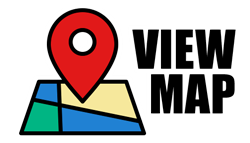The Bike
It's built small
...so you can go BIG
It’s got a single gear. But don’t be fooled… this is no “one-speed”. This bike hauls as fast as you can crank it—with 20-inch wheels designed to accelerate in a hurry and handle the biggest landings. It’s a BMX race bike, engineered to meet the challenges of today's highly technical racetracks and speed straight to the podium.
About The Bikes
 Steer
Steer

- BMX style bars with cross brace
- Threadless stem
Hold on tight - this is BMX Racing! From the grips to the bars, stem to headset, the height, width and length will vary depending on your size. While the younger riders prefer alloy or carbon-fiber handlebars, most larger riders will only rely on chromoly bars for strength and stiffness.

- Front fork
- 20" Front wheel
The front fork of any BMX race bike needs to be strong, as it takes the blunt of the impact if you come up short on a jump. While most forks are made of steel, there are also alloy or carbon-fiber versions, as well.

- Single speed crank
- Platform pedals
Crank length can vary from 140mm (for the small tykes) to 180mm for the largest riders, and are usually made of either alloy or chromoly. Gearing in BMX racing is single-speed, and the front sprocket will range from 41 to 44 teeth. First-time racers should always start off with platform pedals, and as a riders' skills improve (like when they've turned Intermediate or Expert), they may eventually prefer to switch to clipless pedals.

- 20" back wheel
- 1/8" single speed chain
As mentioned earlier, true BMX bikes are single speeds - without any gears, no shifters and definitely no derailuers. Depending on the track or rider preference, you'll most often find a 15 or 16 tooth cog on the rear. The most common type of rear BMX hub is a freewheel (with a thread-on freewheel) or a cassette (where the cog slides on). While some first-time or beginner riders begin with a coaster (back-pedal activated) brake, you'll do much better in racing with a freewheel or cassette.

- Linear pull rear brake
During the 30 to 40 second lap, BMX racers rarely use their brakes. Sure, you'll need 'em to stop at the finish line, or maybe to slow you down to make a pass in a turn, and it is a USA BMX rule that your brakes must work. For this reason, BMXers these days only run a brake in the back; for there is no need to run a front brake.

- Saddle
When sprinting and jumping around a BMX course, you'll rarely sit down on your seat--which is why most modern day racers run it as low and out of the way as possible. Since riders usually only sit on their seat in staging or after the finishline, race saddles are made as lightweight as possible, and without very much padding. Comfort is not a priority.
























Social